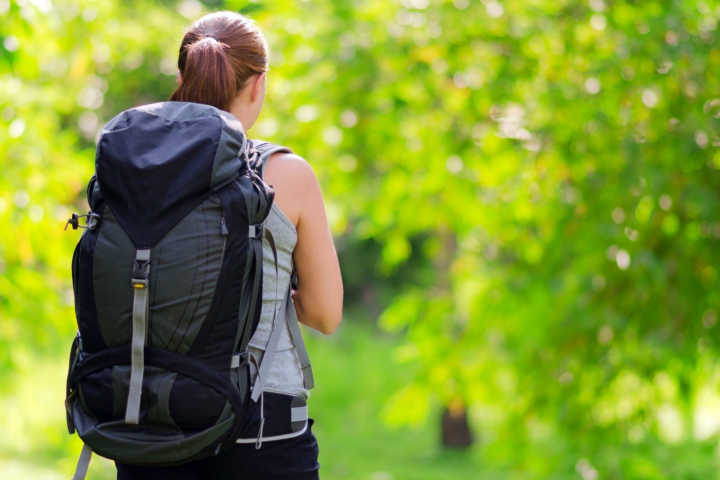
Rather, by taking some time to invest in the right accessories, fold your belongings the correct way, and adequately layer what’s going inside, you’ll never feel like you need that last little bit of available space. To help, we’ve compiled a list of what you should always keep in mind prior to packing and the exact steps for fitting everything you’d ever need for your next big excursion. In no time, you’ll be packing your bag like any seasoned backpacker.
Invest in stuff sacks and plastic bags

Chances are high you’ll have a number of smaller and mid-sized items that need to be stored together and downsized as much as possible. Here, stuff sacks (also called compression sacks) are an invaluable addition. They allow you to compress blankets, sleeping bags, coats, and bits of fabric into a much smaller shape that’s designed for packing.
For longer trips, you should also purchase a store of slide-lock plastic bags to keep small items in, such as bug deterrents, sunscreen, lip balm, a compass, snack food, and so on. These plastic bags keep those tiny items safe, waterproof, and easy to access when necessary.
Roll it up and fit it in
When you start packing clothes, roll them up tight and wedge them carefully into your backpack. Shirts, pants, and most other clothing items can successfully be turned into small rolls that are extremely space efficient — they also don’t get wrinkled as easily but if you’re backpacking, then wrinkles should be low on your list of concerns.
Go slowly on this step. If there’s one fault modern backpacks have, it’s that the frame makes the inside space awkward. There are a lot of curves and odd angles you’ll need to use. Pack your rolls carefully and use all the space possible. There are usually a lot of nooks where you can fit rolled clothing — if you hunt them down.
Layer according to the weight of your items

Layer 1: Mentally divide your backpack up into three different layers or zones. Different types of items should go into each layer — and it’s smart to know why. The bottom layer, for example, should include your lightest items, which will be most things made from fabric. Also, if something may accidentally leak, put it down here: You don’t want anything leaking down through the rest of your pack’s contents. Use this low layer for:
- Clothing
- Sleeping bags
- Blankets
- Extra water
- Liquid fuel
Layer 2: Due to the frames modern backpacks use, your heaviest items should be placed toward the center of your pack, preferably set against the back of the frame (closest to your back). Remember, these weightier items will slide down a bit while hiking, so don’t be afraid to place them in the center and upper center while you are packing. These items include:
- Cooking utensils
- Mini stove
- Protective food canisters
- Food packs
- Water filters (put the filter closer to the top if you’ll need it on the way)
- Binoculars, etc.
Layer 3: The final layer is at the top of the pack should be reserved for medium-weight items that you’ll need frequently, or need to get out first.
- Packs of snack food
- GPS devices
- Rainwear
- Lights and lamps
- Doggy gear
- Alternate socks and shoes
Note: A backpack should not go beyond around 30 percent of your own bodyweight, at most. If your pack feels too heavy, it’s going to hurt you badly after a long hike. Redistribute items to your party as needed and always double-check the straps and fit to make sure your pack is hugging your waist as closely as possible.
Use all pouches and netting
Now is a good time to study the outside of your backpack — especially if it’s a newer purchase — and note every pouch, zipper, and extra bit of netting available. Most backpacks have a top pocket, several side pockets, at least two side pouches, and a netted pouch over the back. These are all excellent for storing immediate, need-to-have items you want to access without stopping or sitting down. That includes water bottles, maps, phones, sunglasses, cameras, hats or beanies, mosquito spray, and so on.
Also, pay attention to your straps: They aren’t all for adjusting the pack’s fit. Many backpacks have loops at the bottom that are designed to hold large rolls, such as packed tents, mattress pads, or sleeping bags. Take advantage of these to save space for more important items.
Buy a few carabiners

Your backpack is full of places or loops to hook on carabiners (and may even come with a couple on purchase). It’s a good idea to attach a few and use them for hanging items as a last resort. Certain water bottles, for example, may be more usable hanging from carabiners than stuffed inside pockets.
It’s also a good idea to buy a protective sunglasses case you can hook onto your backpack and access quickly rather than worry about where your sunglasses are all the time. Many other common hiking accessories, such as water filters and trekking poles, may be hooked onto your pack, as well. Just remember to attach everything and take a few test walks to see how the swinging is and if anything needs to be rearranged.






